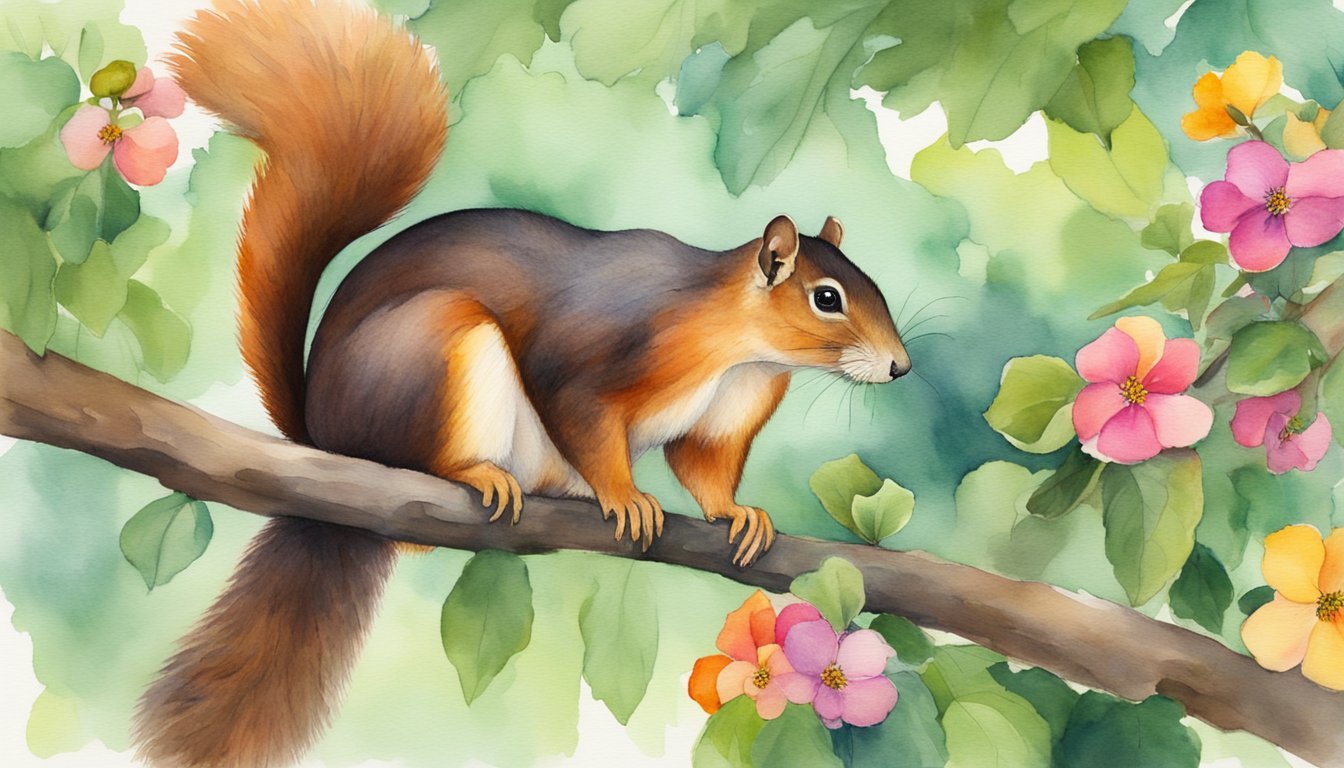Overview of the Indian Giant Squirrel
The Indian Giant Squirrel, also known as Ratufa indica, stands as a remarkable member of the Sciuridae family due to its distinct fur colors and considerable size.
Physical Characteristics
The Indian Giant Squirrel possesses a notable head-and-body length ranging from 25 to 50 centimeters, with its tail length being about the same or sometimes even longer. It weighs between 1.5 to 2 kilograms, although some individuals can weigh up to 3 kilograms. The species flaunts a vibrant coat with a variety of colors including shades of brown, black, cream, tan, and even purple. These vivid colors are particularly eye-catching among the green canopies of India’s forests.
| Scientific Classification | |
|---|---|
| Kingdom: | Animalia |
| Phylum: | Chordata |
| Class: | Mammalia |
| Order: | Rodentia |
| Family: | Sciuridae |
| Genus: | Ratufa |
| Species: | R. indica |
The existence of such color variations in the fur can be seen in stunning photos captured by photographers, which showcase the animal’s unique appearance.
Species and Distribution
Ratufa indica is the scientific name for the Indian Giant Squirrel, sometimes referred to as the Malabar Giant Squirrel. This species is indigenous to India, and its presence is primarily within the country’s tropical and deciduous forests. The distribution of this squirrel species spans various regions in India, with a significant presence in the western state of Maharashtra, where it is also recognized as the state animal. These squirrels are diurnal and arboreal, implying that they are active during the day and firmly adapted to a life among the trees.
A detailed account of its habitat and dietary habits can be found on Animalia, as it provides a comprehensive profile on the species. Another glimpse into the intriguing life of the Indian Giant Squirrel and its habitat can be explored through an array of facts presented by SuchScience. The extensive species distribution and the splendor of its fur are further discussed on resources like Wikipedia and Live Science.
Habitat and Lifestyle

The Indian giant squirrel, also known as the Malabar giant squirrel, is an exceptionally colorful arboreal rodent primarily inhabiting the forests of India. With an impressive ability to leap between treetops, this squirrel plays a vital role in the ecosystem and exhibits a cautious yet vibrant lifestyle.
Diet and Foraging
Indian giant squirrels are predominantly herbivorous, feasting on a diet that includes a variety of fruits, nuts, bark, seeds, flowers, and leaves from the forest canopy. They are known to be quite resourceful in their foraging habits, often venturing into the treetops to find food sources. Occasionally, they may also consume insects and bird eggs, adopting an omnivorous diet. Their strong teeth allow them to gnaw on tough seeds, making them an essential part in the dispersal of seeds throughout their habitats, which is crucial for forest regeneration.
Reproduction and Lifespan
With a breeding behavior that reflects their solitary nature, Indian giant squirrels typically lead a cautious and somewhat secluded life. They display certain vocalizations during the mating season to attract partners. These rodents build large nests out of leaves and twigs, often constructing several within their territory for shelter and rearing of the young. The specific details of their lifespan in the wild are not well-documented, but this squirrel species is known to have a significant role in maintaining their populations through careful rearing of their young in the concealed safety of high treetop nests. The Indian giant squirrel is categorized as “Least Concern” on the IUCN Red List, indicating stable populations, although they remain affected by habitat loss due to deforestation.

